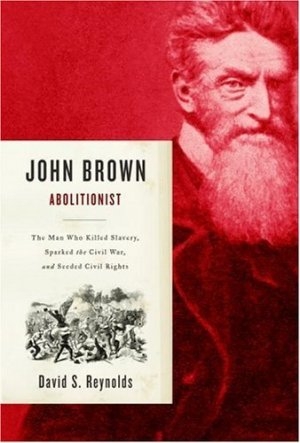 OBIT MAG: A hundred and fifty years ago yesterday, John Brown rode to the gibbet. He wore a black hat, coat, and pants, white socks, and red slippers. Unlike the wrathful, wild-eyed intensity for which he had become famous, Brown’s demeanor was the same as it had been during his trial and imprisonment: unflappably calm, courteous, and even courageous. His composure belied the crimes for which he would forfeit his life: treason, insurrection, and first-degree murder. He walked to the center of the gallows, thanked his jailer for his warmth and hospitality, and waited quietly while his executioners placed a white hood over his head. He stood for 10 minutes while the swarms of soldiers guarding the execution took their places, and then the trap door snapped open beneath his feet, and down he fell. Debate over his fate raged then, and it has yet to stop. John Brown, fearsome scourge of slavery, remains by turns beneficent, cruel, puzzling – and a perfect embodiment of the question “when do the ends justify the means?” […]
OBIT MAG: A hundred and fifty years ago yesterday, John Brown rode to the gibbet. He wore a black hat, coat, and pants, white socks, and red slippers. Unlike the wrathful, wild-eyed intensity for which he had become famous, Brown’s demeanor was the same as it had been during his trial and imprisonment: unflappably calm, courteous, and even courageous. His composure belied the crimes for which he would forfeit his life: treason, insurrection, and first-degree murder. He walked to the center of the gallows, thanked his jailer for his warmth and hospitality, and waited quietly while his executioners placed a white hood over his head. He stood for 10 minutes while the swarms of soldiers guarding the execution took their places, and then the trap door snapped open beneath his feet, and down he fell. Debate over his fate raged then, and it has yet to stop. John Brown, fearsome scourge of slavery, remains by turns beneficent, cruel, puzzling – and a perfect embodiment of the question “when do the ends justify the means?” […]
From a young age, Brown opposed slavery. According to David S. Reynolds, author of John Brown: Abolitionist, on a trip when he was 12, Brown befriended a slave boy his age. He became enraged to see how the boy’s owner treated him, and later said it was the spark that caused him to declare “Eternal war” on slavery. However, it wasn’t until the 1850s, and the violent struggles over Kansas’ admittance to the Union as a free or slave state, that Brown gained national notoriety for his fervor. Most abolitionists at the time urged peaceful resistance, but Brown put his views into violent action. With several accomplices, he butchered five slave-state supporters with broadswords in retaliation for the sacking and burning of Lawrence, a free-state town.
After years of planning, Brown emerged again in October 1859 at Harper’s Ferry, Va., with pikes, rifles and pistols he had bought with money from prominent and wealthy Boston foes of slavery. He seized the federal armory, intending to arm and free slaves, for whom he wanted to establish a safe realm in the Appalachian mountains. But his attack failed and seven people were killed, changing completely the terms of battle and helping to bring about the Civil War. It is not surprising that in our time other extremists, like abortion clinic bomber John Burt, have claimed to act in Brown’s name, saying that their goals justified the violence they wrought. Others have compared Brown to the Unabomber and Osama bin Laden. And in the era of Khalid Shaikh Mohammed, soon to be on trial for planning the 9/11 attacks, John Brown’s legacy is as confusing as ever. He does not lie down easily. MORE
